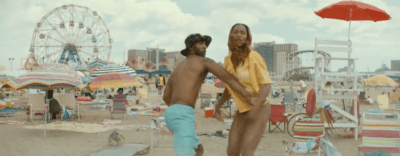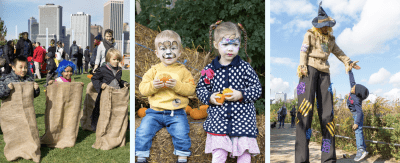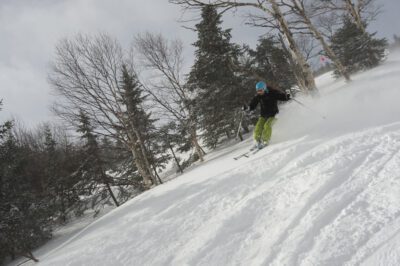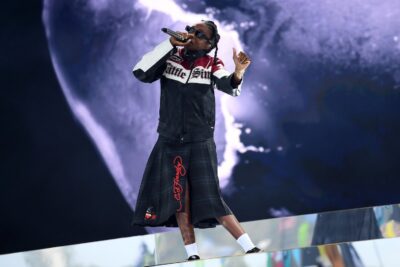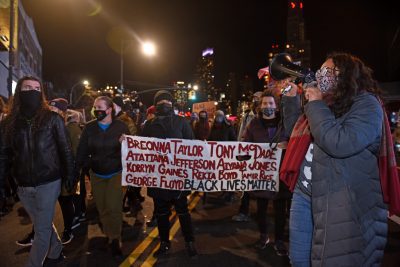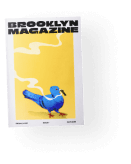Kaves' new Bay Ridge mural (Photo by Lamar Salter)
Local Legends: Kaves pays homage to his Bay Ridge Roots
The artist’s new mural on 86th Street features neighborhood icons from ball players to John Travolta to a Palestinian chef
A new mural in Bay Ridge celebrates the famous icons that define the neighborhood and helped put Brooklyn on the map — and it was designed by hometown hero, Kaves. You may know Kaves (né Michael McLeer) as a prolific graffiti artist, or as a founding member of the ‘90s rap group, The Lordz of Brooklyn. Or if you’re just hanging in the neighborhood, as the co-owner of the pizzeria and music venue, Brooklyn Firefly.
A Bay Ridge native, Kaves had a rough childhood but found a creative outlet with street art and hip-hop, specifically through his talent for graffiti. After running into too much trouble tagging subways and street corners, Kaves and his brother decided to form the Lordz of Brooklyn to find a new way to express themselves and later cope with the tragic loss of their mother and sister, who were killed in a hit-and-run accident.
Now 54, Kaves has a family of his own that all live and work together in the neighborhood and he’s using his talent and all of his past experiences — the good and the bad — to commemorate and immortalize Brooklyn, whether in art galleries or on street walls. Besides his mural, Kaves is also set to unveil an immersive installation at Industry City later this month that will highlight and celebrate Brooklyn’s influence on pop culture over many decades.
Brooklyn Magazine caught up with Kaves at his restaurant and talked over pizza about his new mural, growing up in Bay Ridge during a raw period for hip-hop, and his love for the iconic movie Lordz of Brooklyn named its biggest track after, “Saturday Night Fever.”
This interview has been edited for concision and clarity.

Kaves in front of his 86th Street mural (Photo by Lamar Salter)
Your work with Lordz of Brooklyn and as an artist has had you travel all around the world. When you meet people outside of Brooklyn and they ask where you’re from, how do you explain it to them?
You know, there was a time when Brooklyn wasn’t always the coolest place on the planet. So if you’re a brave pioneer and you’re carrying the flag, you have to first show it.
But there was a respect wherever you went. When we went overseas, there was always this respect to Brooklyn because of the incredible artists that came out of Brooklyn. And because Brooklyn’s such a scrappy place, you know, right outside of Manhattan, a place where everybody was thrown on top of each other, to learn how to get along is probably the great American experiment, right? I guess when they say the melting pot, it was really like a boiling pot.
But the easiest way to say it is: “Bay Ridge, where the movie ‘Saturday Night Fever’ was filmed.” In the ‘70s, it just changed popular culture about Brooklyn.
What was Bay Ridge like for you growing up?
It was hard at times but I had found art and creativity on the street. Bay Ridge is a place where, economically, it’s diverse, you know. Shore Road is like anything below Third Avenue where it was luxury homes and big beautiful houses. But if you were a young kid coming from the other side of the tracks, you’re coming from these welfare buildings. So you had this kind of pressure you know, us as street kids with these prep kids. It was a class struggle. And for me, doing this kind of craft with street art, they looked at me like I was an alien, so there was a lot of blowback.
But the street kids got together and we found a common ground with breakdancing and graffiti as creative outlets. And when we got on the subway train, we would go into different neighborhoods. And because I was a pretty well-known graffiti artist, I would share in that street culture and bring it back to my neighborhood. And the beautiful thing about it is, at some point, the neighborhood went from looking down at me to actually rallying around us when we got our first record deal and became a big supporter of us. And so things change.
That’s crazy to go from being this outsider, getting in trouble all the time, to now people in the neighborhood reaching out to you to help improve it.
Yeah. You know my mother, at some point she looked at our creativity and understood that painting train cars was better than stealing cars. And she would say to people, “Don’t worry, you’ll see what my kids can do.” But she took a lot of shit for us. And now my sister runs this restaurant and my son and nephews work here, my wife. So it’s a family-operated business. You’re seeing this generation growing up in Bay Ridge and this restaurant is a love letter to our neighborhood.
And then you make this beautiful mural celebrating the neighborhood. And now I’m about to ask you an obnoxious question to ask artists, but I really am amazed at how artists can put things together on such a large, I guess, canvas you could say. So I’m curious about your process and approach when creating that kind of art.
Well, think about this: the gestures and whatever paint combinations and stuff is from years and years of doing this. Think about the many layers of paint and walls that I painted in my whole career. That becomes like a muscle memory. If you’re a samurai learning how to swing a sword, you’re doing it thousands of thousands of times before it becomes second nature. And that’s the same for art.
And there’s a lot of pain and suffering associated with making art. And it can be a therapeutic, cathartic way to release. But sometimes you just want to have fun. I’m always writing graffiti. I’ll always be doodling, laying out, writing graffiti on a piece of paper. Because for me, it was always fun.
View this post on Instagram
Did you always have a sense of who would be featured on the 86th Street mural?
Yeah, I first approached that wall with beautiful textures in the background, a sunset kind of feeling in Bay Ridge, because we get these beautiful sunsets over the Verrazano Bridge. And for us growing up in Bay Ridge, that bridge was a beacon of hope. A symbol of strength.
As for the people, I wanted to include a lot of the influential people from the ‘50s and onward who lived in Bay Ridge. You know we got Pee Wee Reese and Chuck Connors to represent our beloved Brooklyn Dodgers players; Albert King and the King brothers who were really important to me and the neighborhood. I actually went to school with the younger brother, Gerald. And we have Chef Rawia of Tanoreen to celebrate Bay Ridge’s rich food culture. And John Travolta and Karen Lynn Gorney in the middle, you know Tony and Stephanie from “Saturday Night Fever” because that movie really put Bay Ridge on the map.
And then you got the Lordz of Brooklyn up there. Of course. Got to represent.
I mean, honestly, how many rap bands do you know come out of Bay Ridge? We were the first and we were very proud of that. I was lucky and happy to be a part of that and to help put my hometown on the map and Brooklyn in general. We were representing. You could say the Lordz of Brooklyn was almost like street royalty.
You might also like 















